MARKETING
Here’s How To Ask for the Salary You Want
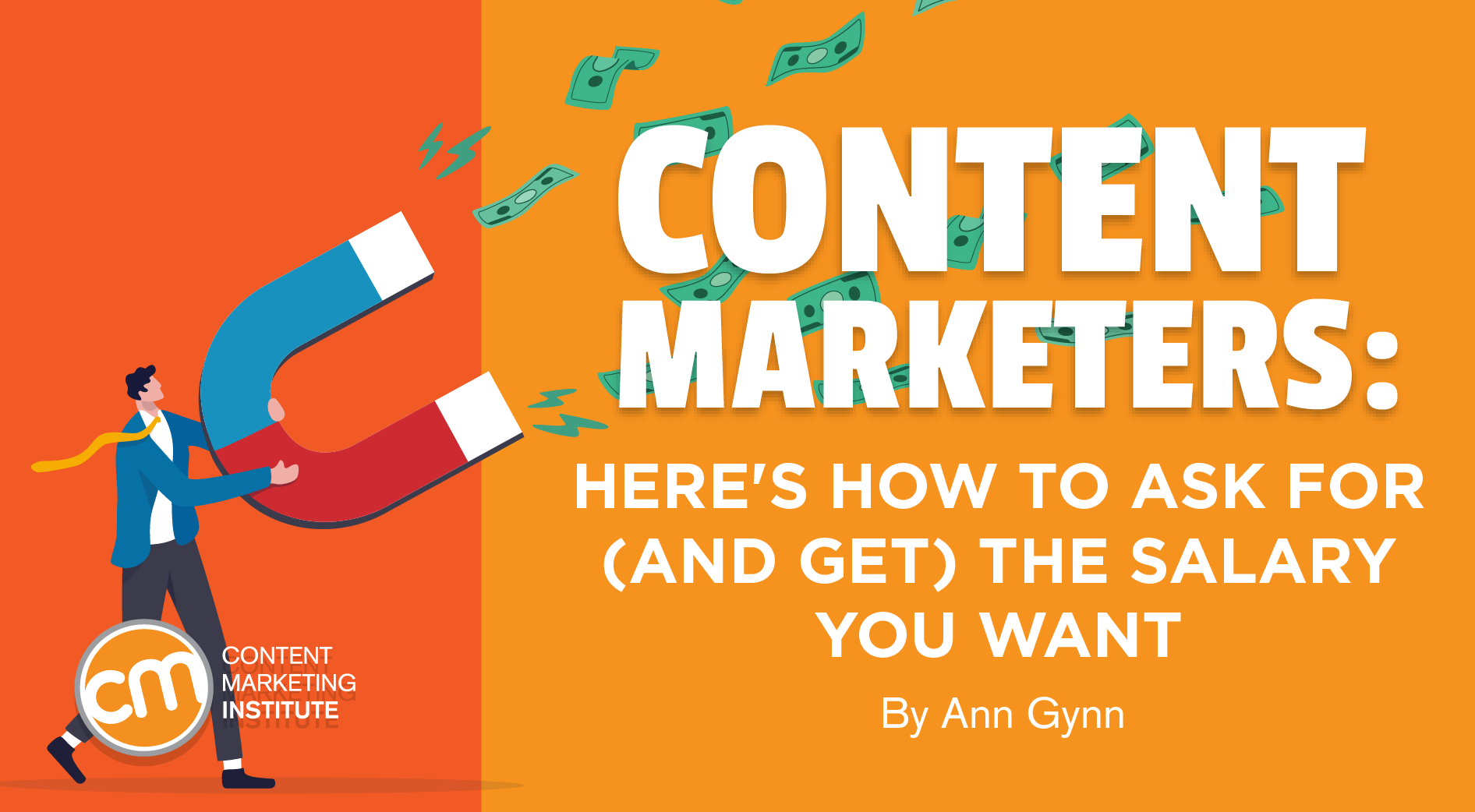
Should you be paid more for what you do?
Over half of content marketers (54%) believe their compensation should be higher, according to CMI’s Content Marketing Career and Salary Outlook 2023 (registration required).
And now’s a good time to ask – the latest CMI B2B research found content marketing’s importance in the business has grown.
Of course, it’s also a tricky time to ask, as businesses face higher prices and external economic pressures. As Tom McMullen, senior client partner at Korn Ferry, has said: “This is the most turbulent compensation environment I’ve seen in my 30-year career.”
So how can you move from thinking you deserve a raise to seeing a bigger number on your paycheck? Do your research, prep your case, and present it effectively.
To get the raise you deserve, research #ContentMarketing salaries, pack your case with results, and practice your pitch, says @AnnGynn via @CMIContent. Click To Tweet
Do external research
To prepare to make your case for a salary increase, find out what others in your industry and similar positions earn. CMI’s salary research found the median salary for U.S.-based content marketers who work for an employer is $82,738.
That number is just a starting point. Dig deeper to understand how experience and role affect compensation, too.
CMI’s salary research found salaries vary based on experience, ranging from $51,190 for those with up to seven years of experience to $96,034 for those with more than 15 years of experience.
CMI divided content marketing roles into three categories – hands-on, manager, and high-level. The median salary for hands-on content marketers is $58,790, while at the executive level, the median wage amounts to $111,851.
For more information on salaries specific to your role, explore job listings on platforms like LinkedIn and Indeed.
Another option is to use the salary tool from the recruiting agency Creative Circle. When you select a job title and location, the tool reveals both the average pay and the desired salary based on what candidates say they want. All the data comes from Creative Circle’s clients and job applicants.
Research role-specific salaries on @LinkedIn, @Indeed, or with a salary tool like the one from @Creative_Circle, says @AnnGynn via @CMIContent. Click To Tweet
Get ready internally
With the external benchmark comparisons in hand, you’re ready to look inward. Evaluate two key things: the general business environment and content marketing’s impact on the business.
If your employer is doing well, asking for a raise makes sense. Salary increases may be possible even if your company has been going through layoffs or shrinking staff sizes. But you’ll need to think critically.
If the company isn’t bringing in enough revenue to pay the bills, forget about asking for a raise. If the company is cutting back for a leaner operation and your role has become more critical, it could be a good time to ask for a salary increase.
Now it’s time to do a self-check.
Dominic Lill is an SEO manager at Trafiki Ecommerce who successfully negotiated salary increases in his previous role as a content editor/marketer. He suggests asking yourself these questions:
- Have my responsibilities grown?
- Have I become more productive?
- What areas of my work could I improve? (Anticipating negatives helps you prepare responses to them.)
With that external, internal, and personal research, you’re almost ready to make the ask. But here’s an idea you should consider long before you want the raise.
Build a bench of supporters
Steve Rose, vice president at Intent, offers a tip to help you prepare your case: “Aggressively cultivate your support base. Having someone else advocate for you can go a long way toward demonstrating your value.”
But don’t wait to develop your advocates until you’re ready to ask for the salary bump. “Build these ties proactively over time,” Steve says. “If they’re comfortable, ask one or two of them to send a statement to your boss about your progress and improvement.”
Another helpful approach is to keep your own bullet list-style document where you paste positive feedback, metrics, and results from your work. Then, when you’re ready to argue for a salary increase (or update your resume), pull the most important and relevant bullets into your formal request.
Prepare for the conversation
Even a well-researched request can feel nerve-wracking. “Most people tremble at approaching their boss about a wage boost,” says Vaibhav Kakkar, CEO of Digital Web Solutions.
Think about how you’ll introduce the topic, then rehearse the conversation.
Vaibhav offers this prompt to get you started: “As you’re aware, I just finished my (X) year with (organization). I am eager to continue working toward the company’s goals in my current position and expand my duties. On that basis, let’s talk about my pay.”
Make a specific request within the realistic possibilities. Otherwise, the employer might offer a raise amount lower than you wanted.
Base your requested amount on your earlier research. Think about the actual percentage increase. If you retain the same responsibilities, a 3% raise is typical. “Anything over 5% is remarkable,” Vaibhav says.
If your duties have expanded or the circumstances have changed (i.e., a job with minimal travel becomes a job with 50% travel), a higher rate of 10 to 20% might be possible, he says.
If you retain the same role and responsibilities but your research points to a wide gap between the average standard industry rate and your compensation, plan for a more extensive conversation. The industry gap likely exists for other roles, too. A significant change in your salary likely would lead your employer to need to address other underpaid positions, too.
Your supervisor is unlikely to approve your request during your initial conversation. They may need to revisit their budget, reflect on what you’ve shared, or have a conversation with their boss.
Set follow-up expectations at the end of the conversation, says Adam Crossling, head of marketing at Zenzero. He suggests some language to use: “Is it OK if I check back with you two weeks from now if I haven’t heard anything?”
Aim for yes, but plan for no
Work for a “yes,” but plan for a “no” or “not now.” That way, if you’re told the company doesn’t have the money, you’ll be ready to propose an alternative solution.
Josh Pelletier, chief marketing officer of BarBend, says: “To move up the ranks, you may ask for something other than a pay raise, such as more training or a chance to participate in special projects.”
As Josh explains, “Mortgages are paid with salary, but careers are built on terms. And those are words to live by if your boss is unable to increase your salary.”
To move up the ranks, ask for something other than a pay raise, says @barbendnews CMO Josh Pelletier via @AnnGynn @CMIContent. Click To Tweet
Salary success story
Content marketer Allison Gagliardi asked for 10% raises at two previous employers. Both times, she got a salary bump.
Allison says she made her case to two employers, both internet marketing agencies, in the annual review process.
With her first employer, she had been a content editor for three years and had received the annual 3% raises most everybody received. Then she made her case and received a 10% increase. She took a similar tactic a few years later as a senior content manager at another agency. In her first-year performance review there, she asked for and received a 10% raise.
How did she make the successful presentations? She wrote a letter outlining her compensation request and listed her accomplishments to date in a bullet format. She signed the letter – with an actual pen – and put it in a two-pocket folder. In the other pocket, she included emails/letters from clients and co-workers singing her praises. “It’s proof they just can’t argue with,” Allison says.
Based on her success, Allison offers a few tips for making your presentation:
- Ask for a percent increase vs. a dollar figure. Sometimes a percentage request is “easier on the eyes.”
- Use numbers to impress. Include percentages, hours worked, money saved, people hired, etc.
- Be ready with a consolation prize. Be prepared with a counteroffer such as, “I’m hearing you can’t meet my request this year. I think adding five paid-time-off days to my account is comparable.”
Be creative about your consolation prize suggestions. Allison offers some suggestions: a bonus on achieving a specific benchmark, permission to bring a pet into the office on certain days, a standing desk, an air card (for Wi-Fi wherever you go), an improved title, a continuing education plan, or even control of the AC unit in your department (yes, for real).
If you don’t get the salary you want? Consider moving on. A recent Pew Research Center study found that people who switched jobs were more likely to get real wage increases (after accounting for inflation) than people who stayed with the same employer. And remember, it’s sometimes easier to negotiate a higher offer than a raise.
Are you ready to make your case for a higher salary? Share your success stories and tips in the comments.
HANDPICKED RELATED CONTENT:
Cover image by Joseph Kalinowski/Content Marketing Institute
MARKETING
YouTube Ad Specs, Sizes, and Examples [2024 Update]
![YouTube Ad Specs, Sizes, and Examples [2024 Update] YouTube Ad Specs, Sizes, and Examples](https://articles.entireweb.com/wp-content/uploads/2024/06/YouTube-Ad-Specs-Sizes-and-Examples.jpg)
Introduction
With billions of users each month, YouTube is the world’s second largest search engine and top website for video content. This makes it a great place for advertising. To succeed, advertisers need to follow the correct YouTube ad specifications. These rules help your ad reach more viewers, increasing the chance of gaining new customers and boosting brand awareness.
Types of YouTube Ads
Video Ads
- Description: These play before, during, or after a YouTube video on computers or mobile devices.
- Types:
- In-stream ads: Can be skippable or non-skippable.
- Bumper ads: Non-skippable, short ads that play before, during, or after a video.
Display Ads
- Description: These appear in different spots on YouTube and usually use text or static images.
- Note: YouTube does not support display image ads directly on its app, but these can be targeted to YouTube.com through Google Display Network (GDN).
Companion Banners
- Description: Appears to the right of the YouTube player on desktop.
- Requirement: Must be purchased alongside In-stream ads, Bumper ads, or In-feed ads.
In-feed Ads
- Description: Resemble videos with images, headlines, and text. They link to a public or unlisted YouTube video.
Outstream Ads
- Description: Mobile-only video ads that play outside of YouTube, on websites and apps within the Google video partner network.
Masthead Ads
- Description: Premium, high-visibility banner ads displayed at the top of the YouTube homepage for both desktop and mobile users.
YouTube Ad Specs by Type
Skippable In-stream Video Ads
- Placement: Before, during, or after a YouTube video.
- Resolution:
- Horizontal: 1920 x 1080px
- Vertical: 1080 x 1920px
- Square: 1080 x 1080px
- Aspect Ratio:
- Horizontal: 16:9
- Vertical: 9:16
- Square: 1:1
- Length:
- Awareness: 15-20 seconds
- Consideration: 2-3 minutes
- Action: 15-20 seconds
Non-skippable In-stream Video Ads
- Description: Must be watched completely before the main video.
- Length: 15 seconds (or 20 seconds in certain markets).
- Resolution:
- Horizontal: 1920 x 1080px
- Vertical: 1080 x 1920px
- Square: 1080 x 1080px
- Aspect Ratio:
- Horizontal: 16:9
- Vertical: 9:16
- Square: 1:1
Bumper Ads
- Length: Maximum 6 seconds.
- File Format: MP4, Quicktime, AVI, ASF, Windows Media, or MPEG.
- Resolution:
- Horizontal: 640 x 360px
- Vertical: 480 x 360px
In-feed Ads
- Description: Show alongside YouTube content, like search results or the Home feed.
- Resolution:
- Horizontal: 1920 x 1080px
- Vertical: 1080 x 1920px
- Square: 1080 x 1080px
- Aspect Ratio:
- Horizontal: 16:9
- Square: 1:1
- Length:
- Awareness: 15-20 seconds
- Consideration: 2-3 minutes
- Headline/Description:
- Headline: Up to 2 lines, 40 characters per line
- Description: Up to 2 lines, 35 characters per line
Display Ads
- Description: Static images or animated media that appear on YouTube next to video suggestions, in search results, or on the homepage.
- Image Size: 300×60 pixels.
- File Type: GIF, JPG, PNG.
- File Size: Max 150KB.
- Max Animation Length: 30 seconds.
Outstream Ads
- Description: Mobile-only video ads that appear on websites and apps within the Google video partner network, not on YouTube itself.
- Logo Specs:
- Square: 1:1 (200 x 200px).
- File Type: JPG, GIF, PNG.
- Max Size: 200KB.
Masthead Ads
- Description: High-visibility ads at the top of the YouTube homepage.
- Resolution: 1920 x 1080 or higher.
- File Type: JPG or PNG (without transparency).
Conclusion
YouTube offers a variety of ad formats to reach audiences effectively in 2024. Whether you want to build brand awareness, drive conversions, or target specific demographics, YouTube provides a dynamic platform for your advertising needs. Always follow Google’s advertising policies and the technical ad specs to ensure your ads perform their best. Ready to start using YouTube ads? Contact us today to get started!
MARKETING
Why We Are Always ‘Clicking to Buy’, According to Psychologists

Amazon pillows.
MARKETING
A deeper dive into data, personalization and Copilots
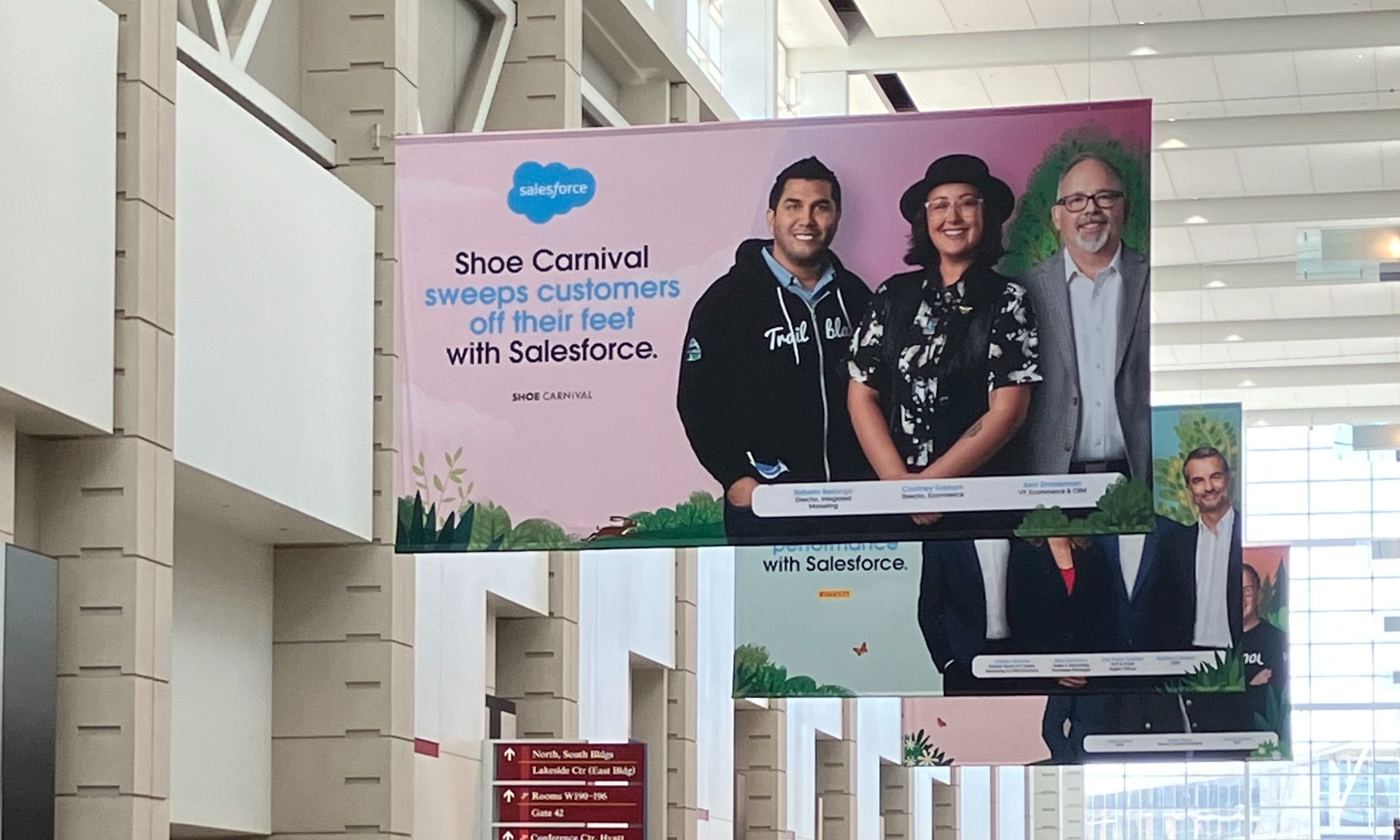
Salesforce launched a collection of new, generative AI-related products at Connections in Chicago this week. They included new Einstein Copilots for marketers and merchants and Einstein Personalization.
To better understand, not only the potential impact of the new products, but the evolving Salesforce architecture, we sat down with Bobby Jania, CMO, Marketing Cloud.
Dig deeper: Salesforce piles on the Einstein Copilots
Salesforce’s evolving architecture
It’s hard to deny that Salesforce likes coming up with new names for platforms and products (what happened to Customer 360?) and this can sometimes make the observer wonder if something is brand new, or old but with a brand new name. In particular, what exactly is Einstein 1 and how is it related to Salesforce Data Cloud?
“Data Cloud is built on the Einstein 1 platform,” Jania explained. “The Einstein 1 platform is our entire Salesforce platform and that includes products like Sales Cloud, Service Cloud — that it includes the original idea of Salesforce not just being in the cloud, but being multi-tenancy.”
Data Cloud — not an acquisition, of course — was built natively on that platform. It was the first product built on Hyperforce, Salesforce’s new cloud infrastructure architecture. “Since Data Cloud was on what we now call the Einstein 1 platform from Day One, it has always natively connected to, and been able to read anything in Sales Cloud, Service Cloud [and so on]. On top of that, we can now bring in, not only structured but unstructured data.”
That’s a significant progression from the position, several years ago, when Salesforce had stitched together a platform around various acquisitions (ExactTarget, for example) that didn’t necessarily talk to each other.
“At times, what we would do is have a kind of behind-the-scenes flow where data from one product could be moved into another product,” said Jania, “but in many of those cases the data would then be in both, whereas now the data is in Data Cloud. Tableau will run natively off Data Cloud; Commerce Cloud, Service Cloud, Marketing Cloud — they’re all going to the same operational customer profile.” They’re not copying the data from Data Cloud, Jania confirmed.
Another thing to know is tit’s possible for Salesforce customers to import their own datasets into Data Cloud. “We wanted to create a federated data model,” said Jania. “If you’re using Snowflake, for example, we more or less virtually sit on your data lake. The value we add is that we will look at all your data and help you form these operational customer profiles.”
Let’s learn more about Einstein Copilot
“Copilot means that I have an assistant with me in the tool where I need to be working that contextually knows what I am trying to do and helps me at every step of the process,” Jania said.
For marketers, this might begin with a campaign brief developed with Copilot’s assistance, the identification of an audience based on the brief, and then the development of email or other content. “What’s really cool is the idea of Einstein Studio where our customers will create actions [for Copilot] that we hadn’t even thought about.”
Here’s a key insight (back to nomenclature). We reported on Copilot for markets, Copilot for merchants, Copilot for shoppers. It turns out, however, that there is just one Copilot, Einstein Copilot, and these are use cases. “There’s just one Copilot, we just add these for a little clarity; we’re going to talk about marketing use cases, about shoppers’ use cases. These are actions for the marketing use cases we built out of the box; you can build your own.”
It’s surely going to take a little time for marketers to learn to work easily with Copilot. “There’s always time for adoption,” Jania agreed. “What is directly connected with this is, this is my ninth Connections and this one has the most hands-on training that I’ve seen since 2014 — and a lot of that is getting people using Data Cloud, using these tools rather than just being given a demo.”
What’s new about Einstein Personalization
Salesforce Einstein has been around since 2016 and many of the use cases seem to have involved personalization in various forms. What’s new?
“Einstein Personalization is a real-time decision engine and it’s going to choose next-best-action, next-best-offer. What is new is that it’s a service now that runs natively on top of Data Cloud.” A lot of real-time decision engines need their own set of data that might actually be a subset of data. “Einstein Personalization is going to look holistically at a customer and recommend a next-best-action that could be natively surfaced in Service Cloud, Sales Cloud or Marketing Cloud.”
Finally, trust
One feature of the presentations at Connections was the reassurance that, although public LLMs like ChatGPT could be selected for application to customer data, none of that data would be retained by the LLMs. Is this just a matter of written agreements? No, not just that, said Jania.
“In the Einstein Trust Layer, all of the data, when it connects to an LLM, runs through our gateway. If there was a prompt that had personally identifiable information — a credit card number, an email address — at a mimum, all that is stripped out. The LLMs do not store the output; we store the output for auditing back in Salesforce. Any output that comes back through our gateway is logged in our system; it runs through a toxicity model; and only at the end do we put PII data back into the answer. There are real pieces beyond a handshake that this data is safe.”
-

 SEARCHENGINES5 days ago
SEARCHENGINES5 days agoBillions Of Google goo.gl URLs To 404 In The Future
-
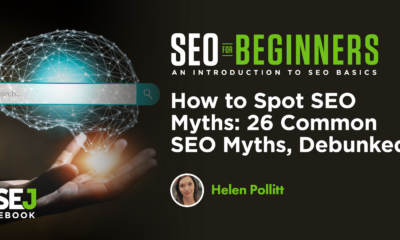
 SEO7 days ago
SEO7 days ago26 Common SEO Myths, Debunked
-
SEARCHENGINES4 days ago
Daily Search Forum Recap: July 22, 2024
-

 SEARCHENGINES6 days ago
SEARCHENGINES6 days agoGoogle Core Update Coming, Ranking Volatility, Bye Search Notes, AI Overviews, Ads & More
-

 SEO5 days ago
SEO5 days ago11 Copyscape Alternatives To Check Plagiarism
-

 SEO6 days ago
SEO6 days agoGoogle Warns Of Last Chance To Export Notes Search Data
-
SEARCHENGINES3 days ago
Daily Search Forum Recap: July 23, 2024
-

 AFFILIATE MARKETING6 days ago
AFFILIATE MARKETING6 days agoThe Top 5 AI Tools That Can Revolutionize Your Workflow and Boost Productivity


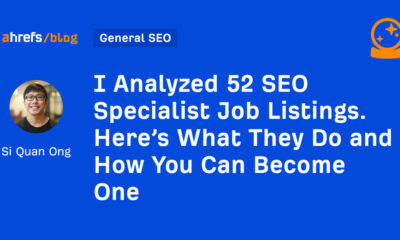



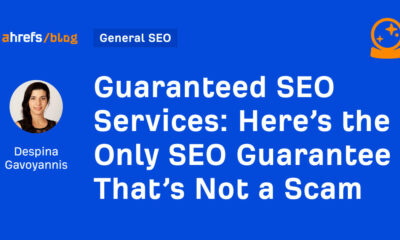









You must be logged in to post a comment Login